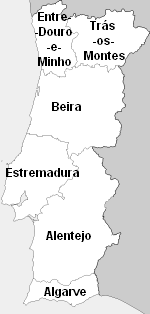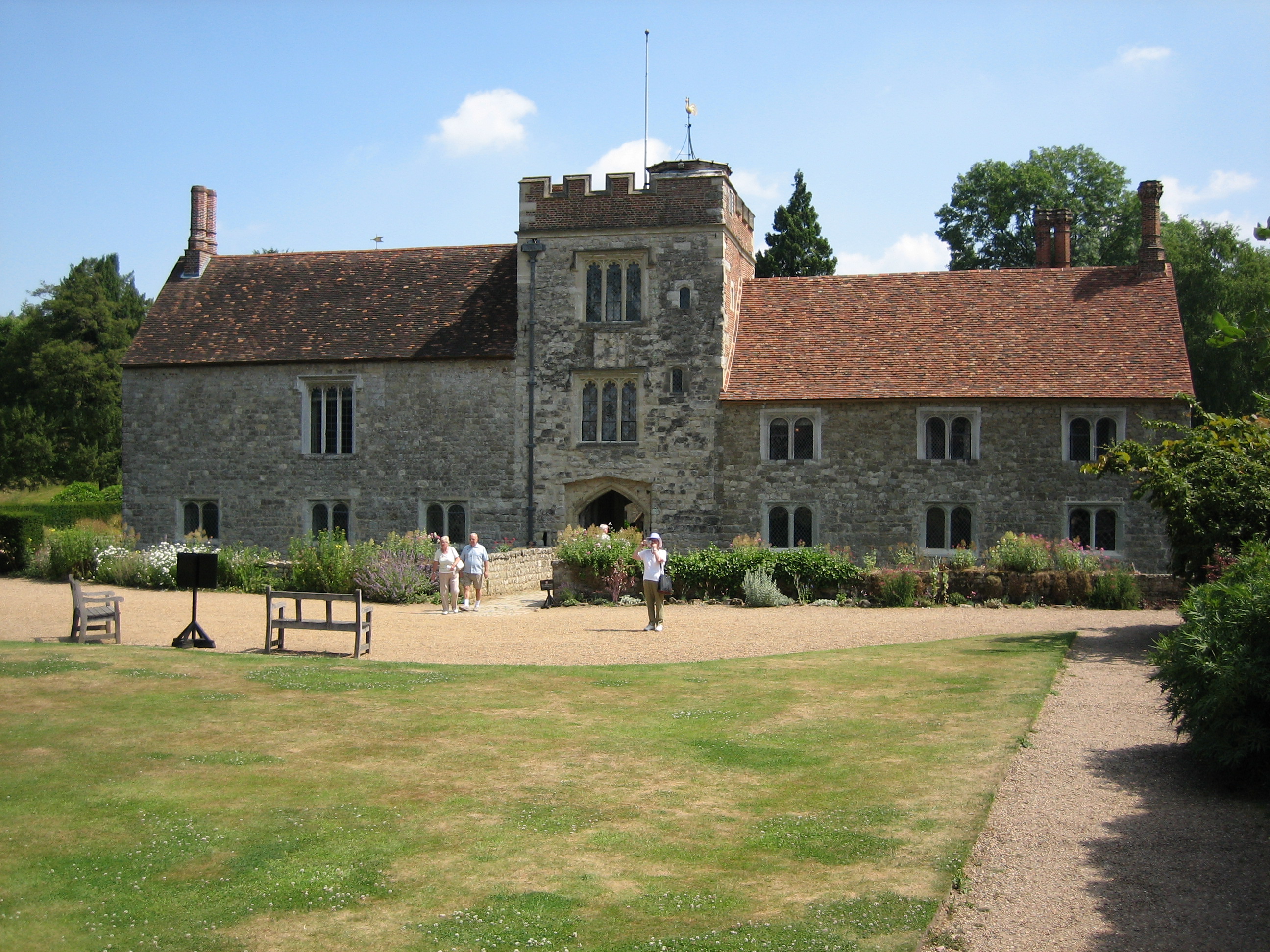|
Inácio De Azevedo
Inácio de Azevedo (1526–1570) was a Portuguese Jesuit missionary. He is one of the Forty Martyrs of Brazil, beatified by Pope Pius IX in 1854. Early life He was born Dom Inácio de Azevedo de Ataíde Abreu e Malafaia in the city of Porto, probably in the first quarter of the year 1526. His family was prominent in the Portuguese nobility of that era. His father, Dom Manuel de Azevedo, was heir to two ancient feudal properties in northern Portugal, the '' honras'' of Barbosa and Ataíde. His mother, Dona Francisca de Abreu, was a daughter of the celebrated Portuguese poet and navigator, João Gomes de Abreu. And one of his younger brothers, Dom Jerónimo de Azevedo, was captain-general of Portuguese Ceylon and viceroy of Portuguese India. He was an illegitimate son, legitimated by a Royal decree on July 22, 1539, as Dom Inácio de Ataíde (a surname of his grandmother - who was heiress of the honra of Ataíde - that he didn't use after joining the Jesuits) and educated at ... [...More Info...] [...Related Items...] OR: [Wikipedia] [Google] [Baidu] |
Beatification
Beatification (from Latin ''beatus'', "blessed" and ''facere'', "to make”) is a recognition accorded by the Catholic Church of a deceased person's entrance into Heaven and capacity to intercede on behalf of individuals who pray in their name. ''Beati'' is the plural form, referring to those who have undergone the process of beatification; they possess the title of "Blessed" (abbreviation "Bl.") before their names and are often referred to in English as "a Blessed" or, plurally, "Blesseds". History Local bishops had the power of beatifying until 1634, when Pope Urban VIII, in the apostolic constitution ''Cœlestis Jerusalem'' of 6 July, reserved the power of beatifying to the Holy See. Since the reforms of 1983, as a rule, one miracle must be confirmed to have taken place through the intercession of the person to be beatified. Miracles are almost always unexplainable medical healings, and are scientifically investigated by commissions comprising physicians and theologi ... [...More Info...] [...Related Items...] OR: [Wikipedia] [Google] [Baidu] |
Jerónimo De Azevedo
Dom Jerónimo de Azevedo ( Estate of Barbosa, Entre-Douro-e-Minho, Portugal, ''circa'' 1560 – Lisbon, 1625) was a Portuguese fidalgo, Governor (captain-general) of Portuguese Ceylon and viceroy of Portuguese India. He proclaimed in Colombo, in 1597, the King of Portugal, Philip I, as the legitimate heir to the throne of Kotte, thus substantiating the Portuguese claims of sovereignty over the island of Ceylon. Early life He was born Jerónimo de Azevedo de Ataíde e Malafaya, one of the thirteen children of Dom Manuel de Azevedo, Comendador of the monastery of São João de Alpendurada. He was thus a half-brother of the Jesuit martyr, Blessed Inácio de Azevedo. Not being the firstborn son, he did not inherit his father's estate, that included the lordship of the medieval '' honras'' of Barbosa and Ataíde, each with an estimated annual income of 100 thousand reais, a considerable sum in 16th century Portugal. Dom Jerónimo was thus compelled to follow the example ... [...More Info...] [...Related Items...] OR: [Wikipedia] [Google] [Baidu] |
Braga
Braga ( , ; cel-x-proto, Bracara) is a city and a municipality, capital of the northwestern Portuguese district of Braga and of the historical and cultural Minho Province. Braga Municipality has a resident population of 193,333 inhabitants (in 2021), representing the seventh largest municipality in Portugal (by population). Its area is 183.40 km2. Its agglomerated urban area extends from the Cávado River to the Este River. It is the most populated urban area in Portugal outside Lisbon and Porto Metropolitan Areas. It is host to the oldest Portuguese archdiocese, the Archdiocese of Braga of the Catholic Church and it is the seat of the Primacy of the Spains. During the Roman Empire, then known as Bracara Augusta, the settlement was the capital of the province of Gallaecia and later of the Kingdom of the Suebi that was one of the first to separate from the Roman Empire. Inside of the city there is also a castle tower that can be visited. Nowadays, Braga is a major hu ... [...More Info...] [...Related Items...] OR: [Wikipedia] [Google] [Baidu] |
St Paul's Church, Braga
The Saint Paul Church in Portuguese, Igreja de São Paulo is a Portuguese 16th-century church in Braga, Portugal, dedicated to Saint Paul the Apostle of Jesus. The church was built by the Jesuits, in the time of the Archbishop Bartholomew of Braga, with a pure simple facade which is in contrast to its luxurious baroque interior with a magnificent wood carving work in the altars. See also * List of Jesuit sites This list includes past and present buildings, facilities and institutions associated with the Society of Jesus. In each country, sites are listed in chronological order of start of Jesuit association. Nearly all these sites have bee ... References {{Churches in Braga Roman Catholic churches in Braga Jesuit churches in Portugal ... [...More Info...] [...Related Items...] OR: [Wikipedia] [Google] [Baidu] |
Coimbra
Coimbra (, also , , or ) is a city and a municipality in Portugal. The population of the municipality at the 2011 census was 143,397, in an area of . The fourth-largest urban area in Portugal after Lisbon, Porto, and Braga, it is the largest city of the district of Coimbra and the Centro Region. About 460,000 people live in the Região de Coimbra, comprising 19 municipalities and extending into an area of . Among the many archaeological structures dating back to the Roman era, when Coimbra was the settlement of Aeminium, are its well-preserved aqueduct and cryptoporticus. Similarly, buildings from the period when Coimbra was the capital of Portugal (from 1131 to 1255) still remain. During the late Middle Ages, with its decline as the political centre of the Kingdom of Portugal, Coimbra began to evolve into a major cultural centre. This was in large part helped by the establishment of the first Portuguese university in 1290 in Lisbon and its relocation to Coimbra in 1308, making ... [...More Info...] [...Related Items...] OR: [Wikipedia] [Google] [Baidu] |
Portuguese Real
The ''real'' (, meaning "royal", plural: ''réis'' or rchaic''reais'') was the unit of currency of Portugal and the Portuguese Empire from around 1430 until 1911. It replaced the ''dinheiro'' at the rate of 1 real = 840 dinheiros and was itself replaced by the '' escudo'' (as a result of the Republican revolution of 1910) at a rate of 1 escudo = 1000 réis. The ''escudo'' was further replaced by the euro at a rate of 1 euro = 200.482 ''escudos'' in 2002. History The first ''real'' was introduced by King Fernando I around 1380.Numária nacional Tesouros Numismáticos Portugueses It was a silver coin and had a value of 120 '' dinheiros'' (10 ''soldos'' or ''libra''). In the reign of [...More Info...] [...Related Items...] OR: [Wikipedia] [Google] [Baidu] |
Lisbon
Lisbon (; pt, Lisboa ) is the capital and largest city of Portugal, with an estimated population of 544,851 within its administrative limits in an area of 100.05 km2. Lisbon's urban area extends beyond the city's administrative limits with a population of around 2.7 million people, being the 11th-most populous urban area in the European Union.Demographia: World Urban Areas - demographia.com, 06.2021 About 3 million people live in the Lisbon metropolitan area, making it the third largest metropolitan area in the , after |
Entre-Douro-e-Minho Province
Entre Douro e Minho () is one of the historical provinces of Portugal which encompassed the country's northern Atlantic seaboard between the Douro and Minho rivers. Contemporaries often referred to the province as simply "Minho". It was one of six provinces Portugal was commonly divided into from the early modern period until 1936, although these provinces were not recognized as official units of government. Geography The coastline of Entre Minho e Douro is level and unbroken except by the estuaries of the main rivers; inland, the elevation gradually increases towards the north and east, where several mountain ranges mark the frontier. Of these, the most important are the Serra da Peneda (), between the rivers Minho and Lima; the Serra do Gerez (), on the Galician border; the Serra da Cabreira (), immediately to the south; and the Serra do Marão (), in the extreme south-east. As its name implies, the province is bounded by two rivers, the Douro on the south, and the Minho ... [...More Info...] [...Related Items...] OR: [Wikipedia] [Google] [Baidu] |
Lord Of The Manor
Lord of the Manor is a title that, in Anglo-Saxon England, referred to the landholder of a rural estate. The lord enjoyed manorial rights (the rights to establish and occupy a residence, known as the manor house and demesne) as well as seignory, the right to grant or draw benefit from the estate. The title continues in modern England and Wales as a legally recognised form of property that can be held independently of its historical rights. It may belong entirely to one person or be a moiety shared with other people. A title similar to such a lordship is known in French as ''Sieur'' or , in German, (Kaleagasi) in Turkish, in Norwegian and Swedish, in Welsh, in Dutch, and or in Italian. Types Historically a lord of the manor could either be a tenant-in-chief if he held a capital manor directly from the Crown, or a mesne lord if he was the vassal of another lord. The origins of the lordship of manors arose in the Anglo-Saxon system of manorialism. Following ... [...More Info...] [...Related Items...] OR: [Wikipedia] [Google] [Baidu] |
John III Of Portugal
John III ( pt, João III ; 7 June 1502 – 11 June 1557), nicknamed The Pious ( Portuguese: ''o Piedoso''), was the King of Portugal and the Algarves from 1521 until his death in 1557. He was the son of King Manuel I and Maria of Aragon, the third daughter of King Ferdinand II of Aragon and Queen Isabella I of Castile. John succeeded his father in 1521 at the age of nineteen. During his rule Portuguese possessions were extended in Asia and in the New World through the Portuguese colonization of Brazil. John III's policy of reinforcing Portugal's bases in India (such as Goa) secured Portugal's monopoly over the spice trade of cloves and nutmeg from the Maluku Islands. On the eve of his death in 1557, the Portuguese empire had a global dimension and spanned almost . During his reign, the Portuguese became the first Europeans to make contact with Japan (during the Muromachi period). He abandoned the Muslim territories in North Africa in favor of the trade with India ... [...More Info...] [...Related Items...] OR: [Wikipedia] [Google] [Baidu] |
Decree
A decree is a legal proclamation, usually issued by a head of state (such as the president of a republic or a monarch), according to certain procedures (usually established in a constitution). It has the force of law. The particular term used for this concept may vary from country to country. The ''executive orders'' made by the President of the United States, for example, are decrees (although a decree is not exactly an order). Decree by jurisdiction Belgium In Belgium, a decree is a law of a community or regional parliament, e.g. the Flemish Parliament. France The word ''décret'', literally "decree", is an old legal usage in France and is used to refer to executive orders issued by the French President or Prime Minister. Any such order must not violate the French Constitution or Civil Code, and a party has the right to request an order be annulled in the French Council of State. Orders must be ratified by Parliament before they can be modified into legislative Acts ... [...More Info...] [...Related Items...] OR: [Wikipedia] [Google] [Baidu] |








.jpg)